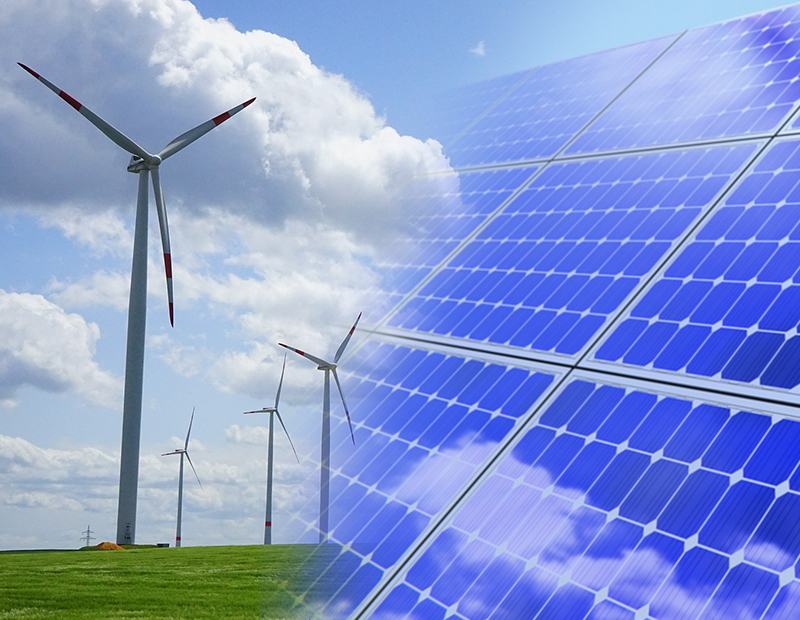Renewable Energy and the COVID-19 Factor
The pandemic has little-discussed implications for the supply chain that powers alternative energy projects in the U.S. and around the world.
The coronavirus outbreak has far-reaching implications for every aspect of economic activity, not least alternative energy. In China, for example, carbon emissions slowed noticeably. At the same time, the virus is threatening the the supply chain for global decarbonization.
Experts estimate that greenhouse emissions in China have fallen by 25 percent in recent weeks following en masse quarantine measures. An analysis by Lauri Myllyvirta at the Center for Research on Energy and Clean Air concluded that carbon emissions in China declined by 200 million metric tons in February compared with the same period in 2019.
In addition, according to NASA, reduced driving led to a 30 percent decrease in nitrogen dioxide emissions, and combined with less coal burning to reduce pollution. But the decline could be short-lived as people return to work and factories try to make up for lost time.
Further declines in emissions are expected as airlines cut flights. That, in turn, is affecting oil demand. By March 19, the price of crude oil had dropped to about $28 per barrel.
(hidden) costs
The price for this consistent drop in emissions is yet to be determined. Fatih Birol, executive director of the International Energy Agency, has warned that a decline in emissions caused by the economic crisis is nothing to celebrate. He urges governments to instead use green investments to help support economic growth through the slowdown.
On the alternative energy front, concerns are growing that supply disruptions will affect the solar and wind markets. Contrary to popular belief, the biggest worry is not reduced production per se, as the manufacturing process could be handled in other countries besides China. The main concern is the so-called “critical minerals,” or sourcing inputs, that can be found only in certain countries.
The U.S. government identified 35 minerals critical for the economy and national security, among them rare earth elements. The U.S. imports 29 of the 35, and rare earth elements come exclusively from imports. The main exporter is China, which controls roughly 70 percent of supplies. The trade war between China and the U.S. is generating worries about an effect on rare earth exports to the U.S.
Local solar
China is the world’s largest solar module manufacturer. With solar manufacturing plants and businesses vacant or not fully staffed, and restrictions imposed on airline travel, delivering the components in time to overseas plants and other solar businesses in a timely manner is a growing concern. While this could prove beneficial to domestic production by creating solar jobs in the country, it will most likely slow down solar energy expansion.
The shortage of solar installation components is likely to end up delaying residential projects. Companies handling these projects will have to reach deep and get any supplies of panels they have, while also adjusting customer expectations for how long installing a solar array will take. Moreover, the supply shortage will likely put extra pressure on demand, which will cause prices to spike.
Also at issue is the federal Investment Tax Credit agreement. If developers meet certain criteria, projects brought online after the period agreed upon initially can still secure a 30 percent tax credit. But the COVID-19 outbreak could affect the deadlines of current solar projects underway, and that could affect the number of subsidies. Sales of electric vehicles are expected to stall, too.
Gone with the wind?
The Global Wind Energy Council and the Chinese Wind Energy Association have zoomed in on the impact of COVID-19 on the Chinese and global wind industry. GWEC Market Intelligence interviewed six major Chinese wind turbines original equipment manufacturers, which, in 2018 held about 75 percent of the Chinese markets combined, and concluded that the virus will impact supply chain and installation operations, but more locally than outside China.
The organization stated that the virus will adversely impact the wind industry, but supply chain disruptions and installation delays will be moderate and limited to certain geographic locations.
General Electric tracks the impact of COVID-19’s outbreak on its activity and earnings and confirmed that its GE Renewable Energy unit has been affected by the coronavirus across its supply chain. The U.S. company expects a negative impact of between $200 million to $300 million on operating profit in the first quarter.









You must be logged in to post a comment.